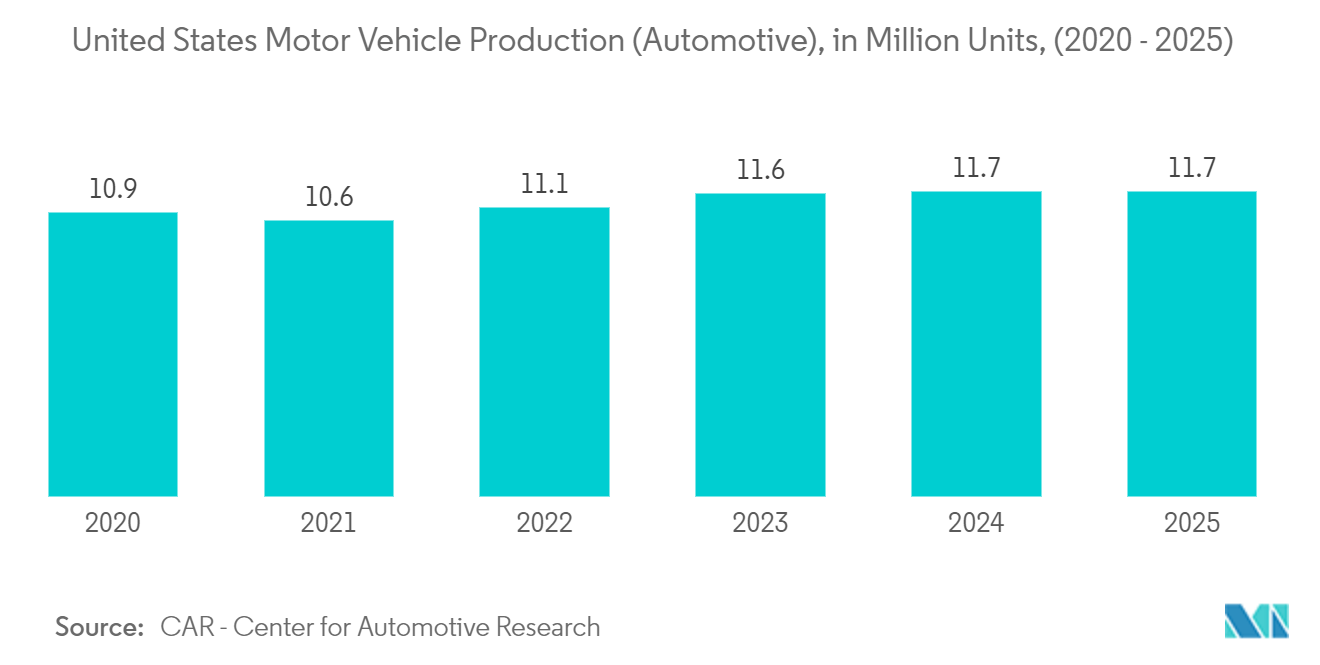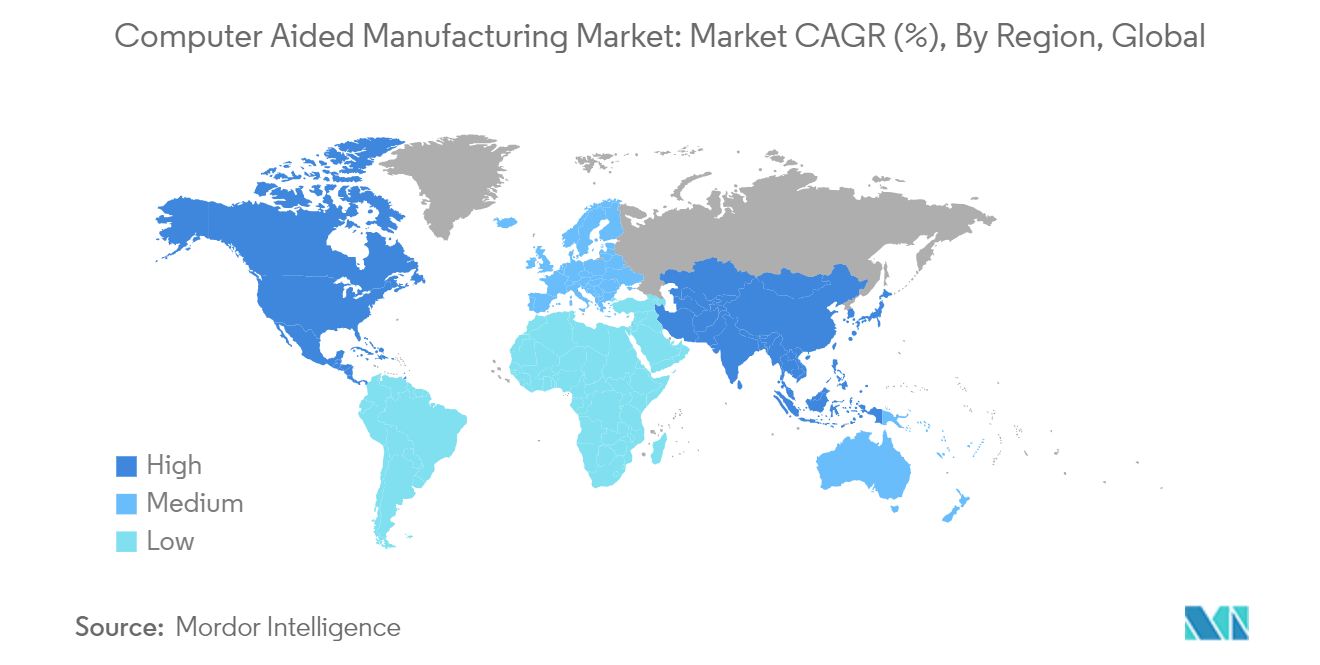Market Trends of Computer Aided Manufacturing Industry
Automotive is Expected to Hold a Major Market Share
- Automobile production includes the globalization of engineering, design, manufacturing, and third-party suppliers. This increased the need for information systems to assist automobiles production using computer-aided manufacturing (CAM).
- Automotive CAM is gaining widespread adoption as it addresses mechanical design issues such as clearances, strain, stress, heat, and vibration. CAM systems are increasingly being deployed in handling the large part files standard in automotive designing.
- CAM systems in the automotive sector simplify fault detection on the production line and enable it to be eliminated immediately. CAM simulations assist computers in simulating real-life scenarios on 3D models, which includes testing for a violent impact, harsh weather, high-speed scenarios, wear and tear issues, and crashes.
- Technological advancements, such as quantum computing, combine GPUs and CPUs into a single element to eliminate the need for additional interfaces. Therefore, operations can be completed faster, significantly impacting the speed of the design process in the automobile sector.
- Furthermore, vendors operating in the market are leveraging 3D printing and other technologies, such as CAM to disrupt product modeling processes and play an essential role in the automotive industry in the future.

North America is Expected to have Highest Market Share
- North America is expected to hold the highest market share in the studid market owing to the increased adoption rate of industrial robotics and CAM in the United States region. With industrial robots, CAM has helped improve the robotics' functioning, propelling market growth.
- Due to unprecedented competition from automakers, the region invests heavily in its efforts to compete. End-users are investing in CAM solutions due to pending emission control and safety regulations. For instance, as per OICA, around 13.43 million motor vehicles were produced in North America in the previous year due to increased production costs and changes in the supply chain.
- Industry 4.0 and smart factories have compelled manufacturers to automate the process to improve efficiencies. For instance, Deloitte opened a new smart factory in Wichita, Kansas, United States, in the previous year, bringing together an ecosystem of innovators to make Industry 4.0 a reality.
- The growth of smart factories is bringing together an ecosystem of world-renowned solution providers and technology innovators to help solve the most complex manufacturing challenges. A fully operational manufacturing line utilizes machine learning, artificial intelligence, big data, robotics, vision solutions, and others.
- Furthermore, the high labor cost in the United States has compelled manufacturers to adopt automation to reduce expenditures. For instance, unit labor costs in the United States increased by 3.2 percent annually in the fourth quarter last year, according to FXTM Academy. Thus, CAM deployments have reduced the risks associated with human labor, further propelling market growth.


